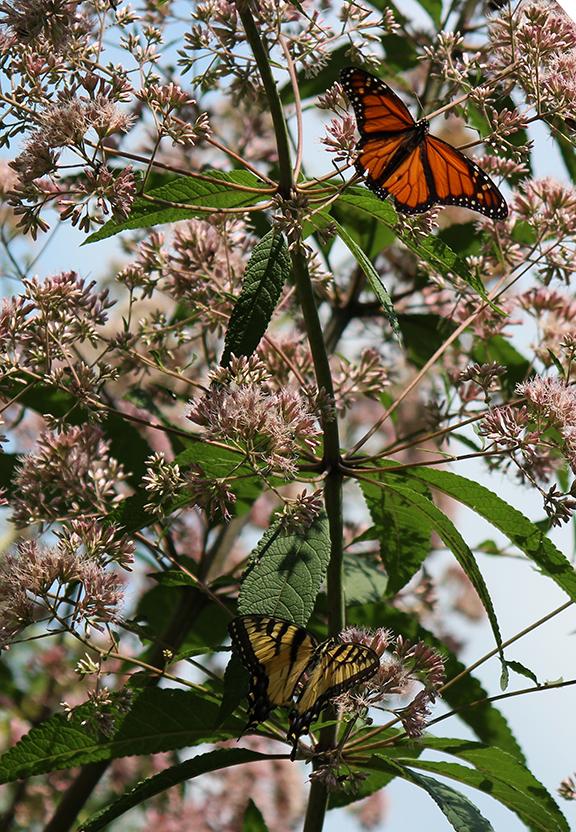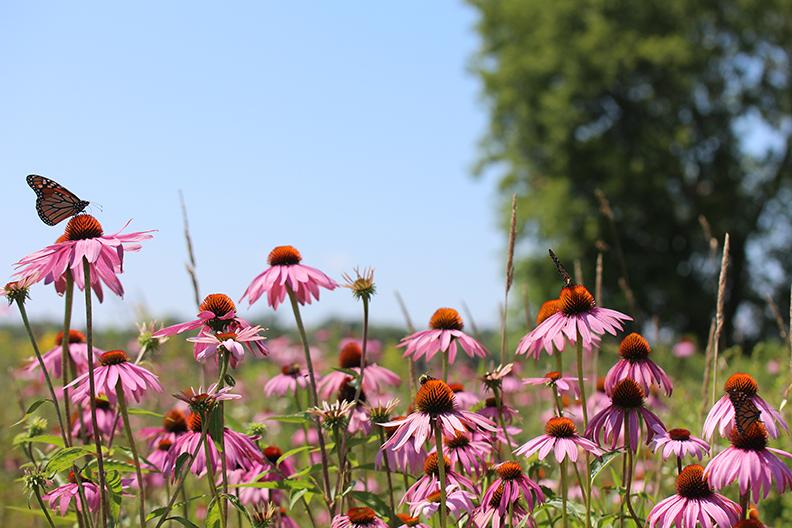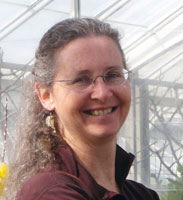Invasive Species Awareness: Butterfly Bush (Buddleja davidii)
As National Invasive Species Awareness week draws to a close, we here at Toadshade Wildflower Farm have been reflecting on the role of invasive species - not only in the greater world around us, but unfortunately also in our own community, in the form of garden plants. We've spent some time this week reading articles on the invasive species that people plant, and the question posed by gardeners always seems to be the same: "but it's so pretty, and I don't see any negative effects in my garden, so surely...it can't be that bad?"
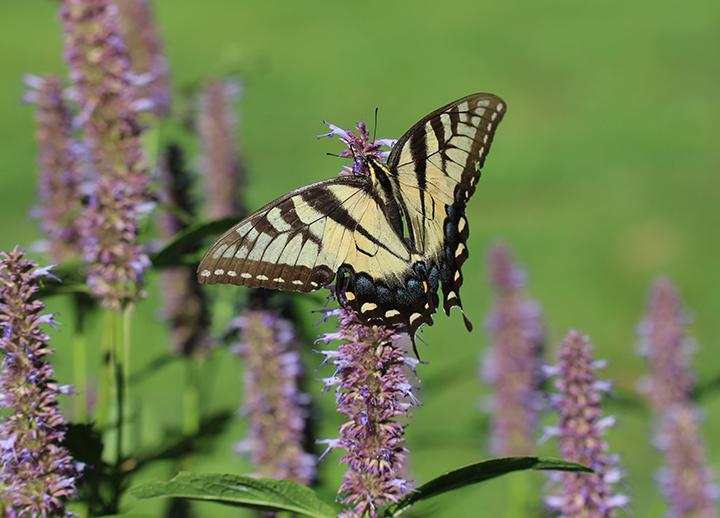
There are so many wonderful non-invasive, native butterfly-attracting plants, like Purple Giant Hyssop (Agastache scrophulariifolium) - here being visited by an Eastern Tiger Swallowtail (Papilio glaucus)
Here's the thing you might not know about butterfly-bush (Buddleja davidii). Their seeds are tiny; they blow like dust on the wind, and spread further and wider than you think they do. And they produce so many flowers over such a long period of time, that even dead-heading will only slightly slow the spread of this invasive species because it is unlikely that you will ever get them all. We have many butterfly-bush defenders in our area, which...may be why they've begun to sprout along the edges of our local lakes and streams, along rocky cliffs, and in wildflower meadows--all the while crowding out asters, milkweeds, goldenrods, and other native wildflowers and shrubs. Two years after one of our neighbors planted a butterfly-bush, we suddenly found a young one growing on the edge of our meadow (and removed it). The thing about invasive plants that spread aggressively is that they won't be untrue to their nature just because you like them. Seed distribution being what it is, you won't know for sure that those butterfly-bushes growing in the woods came from seeds of the plant in your backyard. But they came from someone's backyard, and surely that person doesn't believe they're harming the environment either.
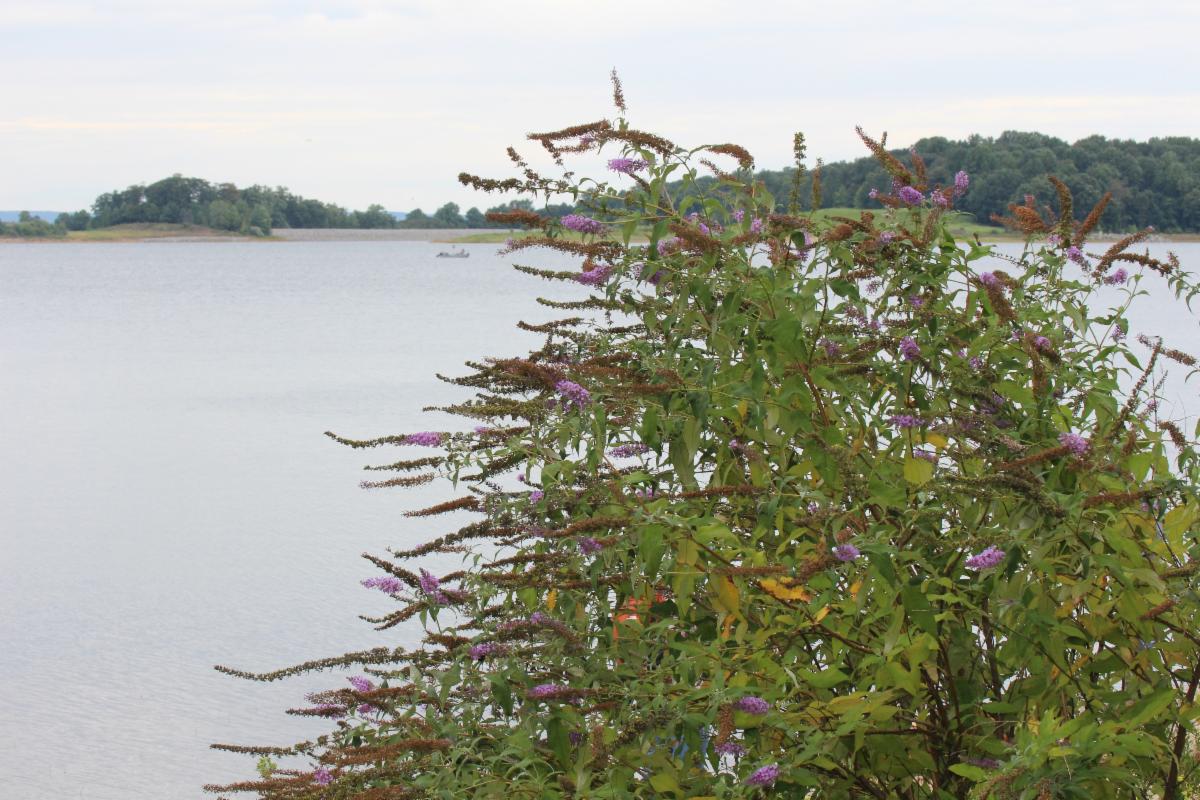
It may seem innocuous in your garden, but what about its seeds?
This escaped butterfly-bush (Buddleja davidii) is growing on the edge of a reservoir in a natural
area, far from any backyard its seed may have originated in.
Yes. But the butterflies also love Purple Giant Hyssop (Agastache scrophulariifolia),
and Joe Pye Weed (Eupatorium & Eutrochium sp.), and Purple Coneflower
(Echinacea purpurea), and New England Aster (Symphyotrichum novae-angliae),
and a whole host of other native plants. And unlike butterfly-bushes, these plants can
offer them more than sugar water. There are ways to get your garden aflutter without
planting an invasive species that will inevitably escape and disrupt the ecology of your
area. The way to do it is to plant more native species! Butterflies start as caterpillars,
and caterpillars have to have something to eat. What's more, most caterpillars don't end
up as butterflies, they end up as baby bird food, so to get a lot of butterflies (and birds!),
you need a lot of host plants to support a genuine abundance of caterpillars!
Butterfly-bushes can attract butterflies to your yard, but they can't help butterfly population
levels increase because butterfly-bush is not a caterpillar host for any butterfly or moth
native to North America. Planting a butterfly-bush in your yard is the gardening equivalent
of being the teacher in elementary school who puts on a movie and gives the kids soda and
candy instead of teaching them to read. Yes, the kids are going to love you, and it sure is
fun! But in the long run...you're actually hurting more than helping.
All of our Joe Pye Weeds are swarmed with butterflies every summer
(like this Hollow Joe Pye Weed, Eutrochium fisulosum)
There are so many great plants to choose from - choose plants that are not invasive and the wildlife will love you!
Monarch Butterfly (Danaus plexippus) on Purple Coneflower (Echinacea purpurea)
For more information about invasive species in your area, visit invasive.org
But the Butterflies Love It!
